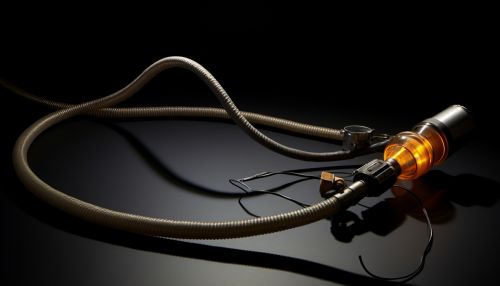Bronchoscopy
Overview
Bronchoscopy is a medical procedure that allows for the visual examination of the airways, including the trachea and the bronchi. This procedure is performed by a specialist known as a pulmonologist, using a bronchoscope - a thin, flexible tube equipped with a light and a camera at its end. The bronchoscope is inserted through the nose or mouth, down the throat, and into the airways, providing a clear view of the respiratory tract.


Indications for Bronchoscopy
Bronchoscopy is typically performed when a patient presents with respiratory symptoms that cannot be diagnosed or treated with less invasive methods. These symptoms may include persistent cough, unexplained shortness of breath, or abnormal findings on a chest X-ray or CT scan. It can also be used to diagnose lung diseases such as lung cancer, tuberculosis, pneumonia, and interstitial lung disease.
Types of Bronchoscopy
There are two main types of bronchoscopy: flexible bronchoscopy and rigid bronchoscopy.
Flexible Bronchoscopy
Flexible bronchoscopy is the most commonly performed type. It uses a flexible bronchoscope, which can navigate the twists and turns of the airways. This procedure is typically performed under local anesthesia and sedation.
Rigid Bronchoscopy
Rigid bronchoscopy uses a rigid, straight bronchoscope and is usually performed under general anesthesia. It is less commonly used but may be preferred in certain situations, such as when large amounts of secretions need to be removed, or when a large foreign body is lodged in the airway.
Procedure
The bronchoscopy procedure begins with the administration of a local anesthetic to numb the throat and possibly a sedative to help the patient relax. The bronchoscope is then inserted through the nose or mouth and guided down the throat into the airways. The camera at the end of the bronchoscope transmits images to a monitor, allowing the pulmonologist to visually inspect the airways. If necessary, small tools can be passed through the bronchoscope to collect tissue samples (biopsies) or to remove foreign objects.
Risks and Complications
While bronchoscopy is generally considered safe, it does carry some risks. These may include minor bleeding, especially if a biopsy is taken, infection, reaction to the anesthesia, and in rare cases, pneumothorax (collapsed lung). It is important for patients to discuss these risks with their healthcare provider prior to the procedure.
After the Procedure
Following a bronchoscopy, patients are monitored until the effects of the sedative wear off. They may experience a sore throat, cough, or hoarseness for a few days after the procedure. Results from a bronchoscopy, especially if biopsies were taken, may take several days to a week to come back.
